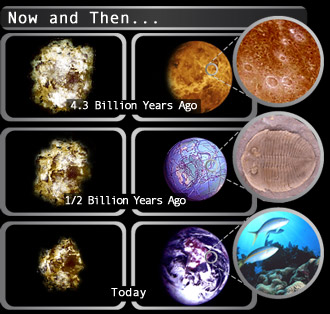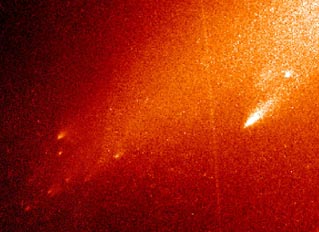 |
|||||
|
Older Than Dirt Astronomers get
excited when a comet comes close to Earth, not only because it
becomes visible, but because with a spacecraft, they can observe it
"up close." Scientists even hope a robot satellite will
soon be able to collect a sample of a comet and bring it back
to Earth.
So studying a piece of a comet would be like examining a piece of the earth from millions, or even billions of years ago! Comets may eventually help us find out how DNA, the blueprint of life, was created from the simple compounds of the original solar nebula, and finally, how complex plants, people, and animals came to be!
Would you like to find out what Comets are made of? Would you like to make one yourself?
|
|||||
| This is the end of the Comet Origins section. Click Continue to play the game, "What's In a Comet Anyway?" | |||||
|
|
|||||
|
ęCopyright 2000 Regents of the University of California. |

 In the year 2000, a new comet was discovered, headed for the Sun. It was named Comet Linear. As it got closer to the Sun, the comet got so hot that it broke apart. Some
astronomers think the bright specks you see in this picture of the
broken comet may be the original
In the year 2000, a new comet was discovered, headed for the Sun. It was named Comet Linear. As it got closer to the Sun, the comet got so hot that it broke apart. Some
astronomers think the bright specks you see in this picture of the
broken comet may be the original